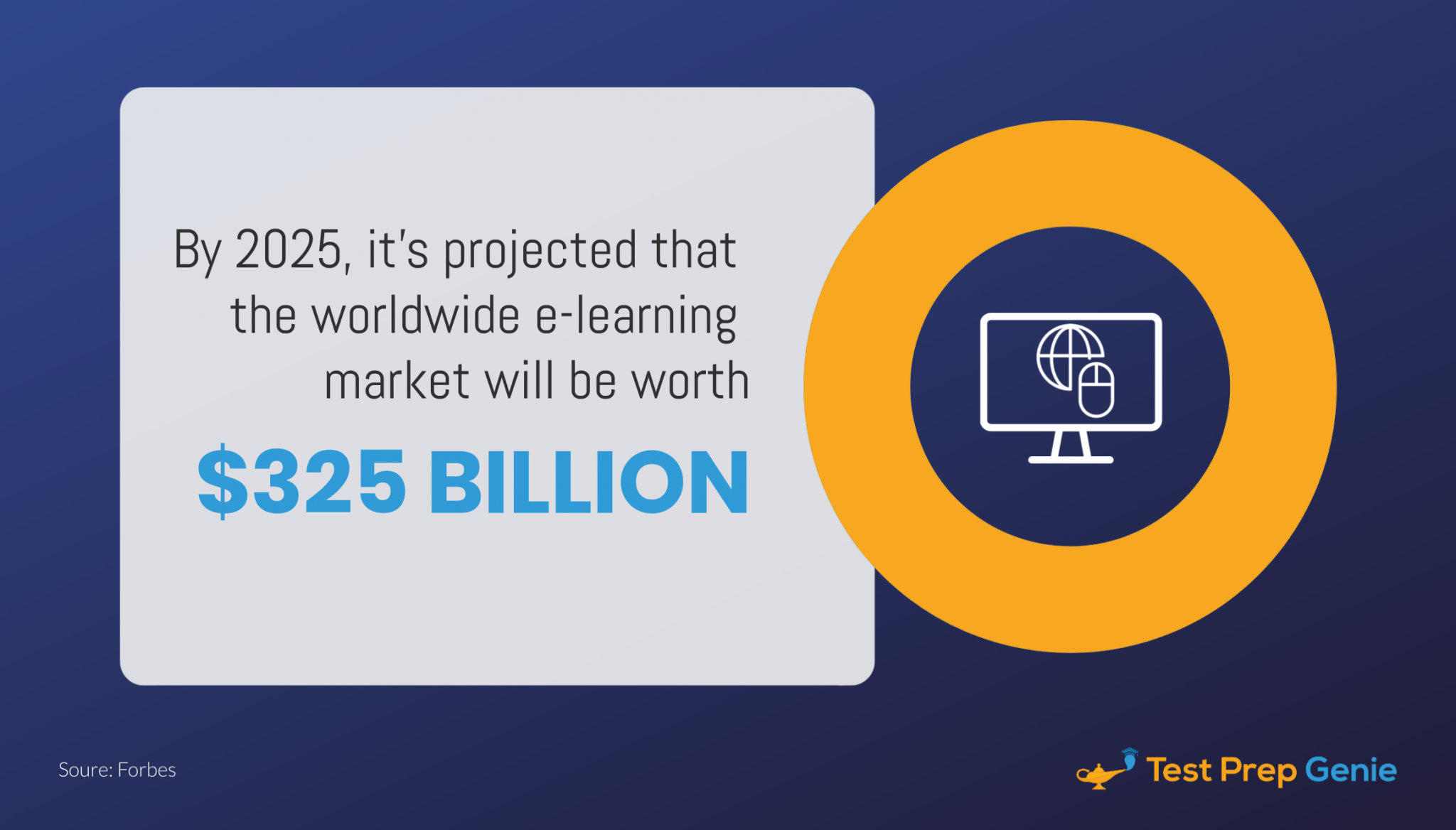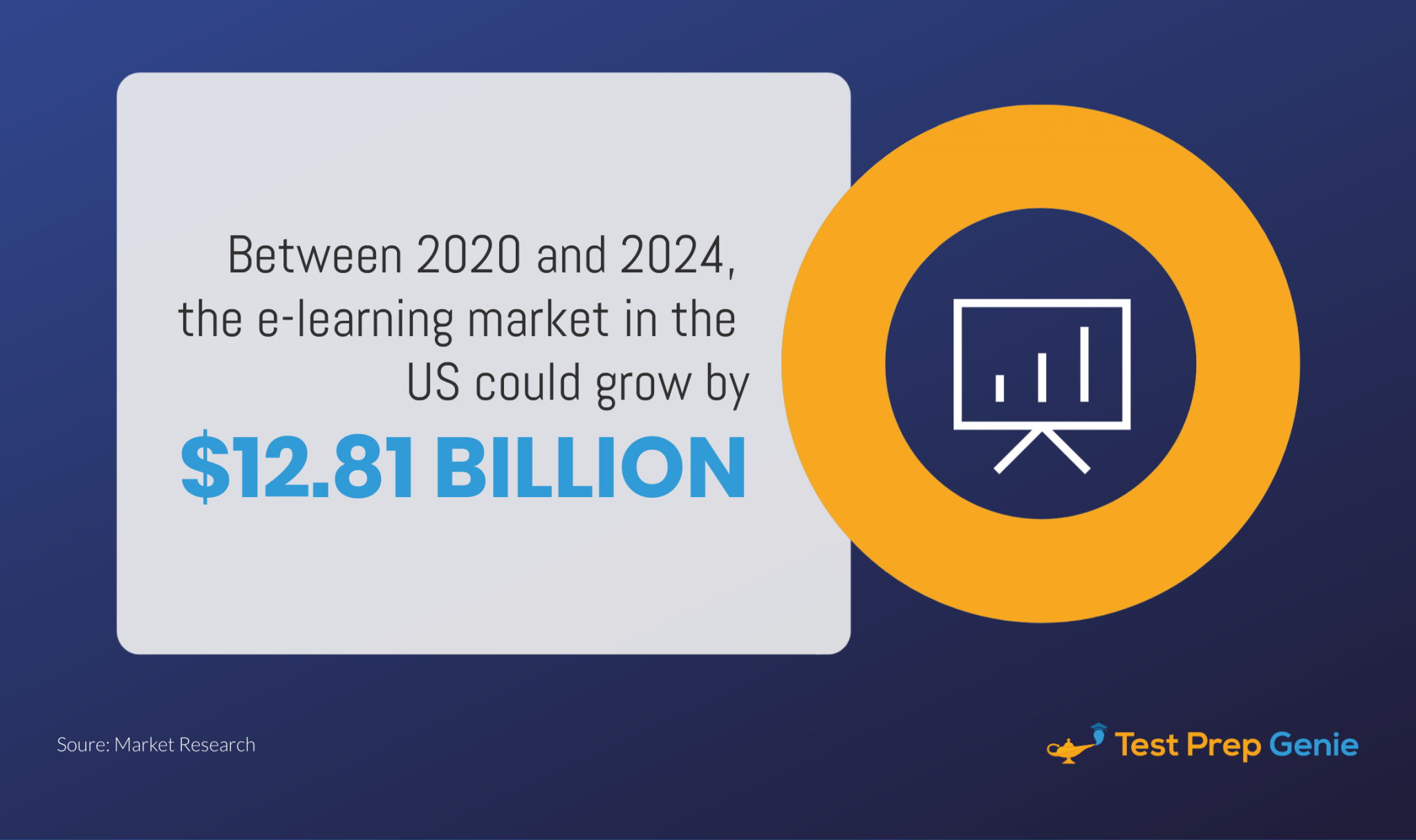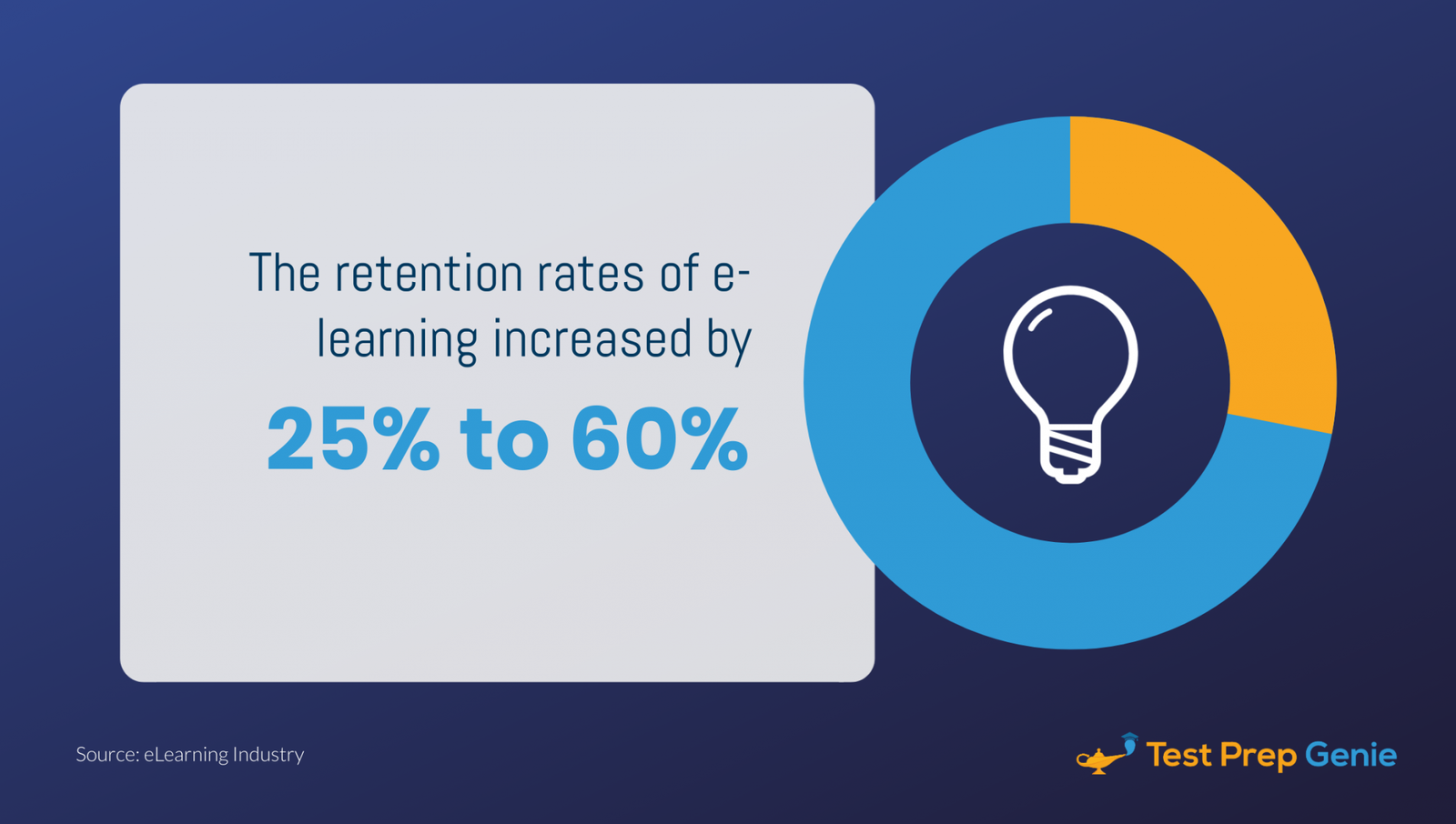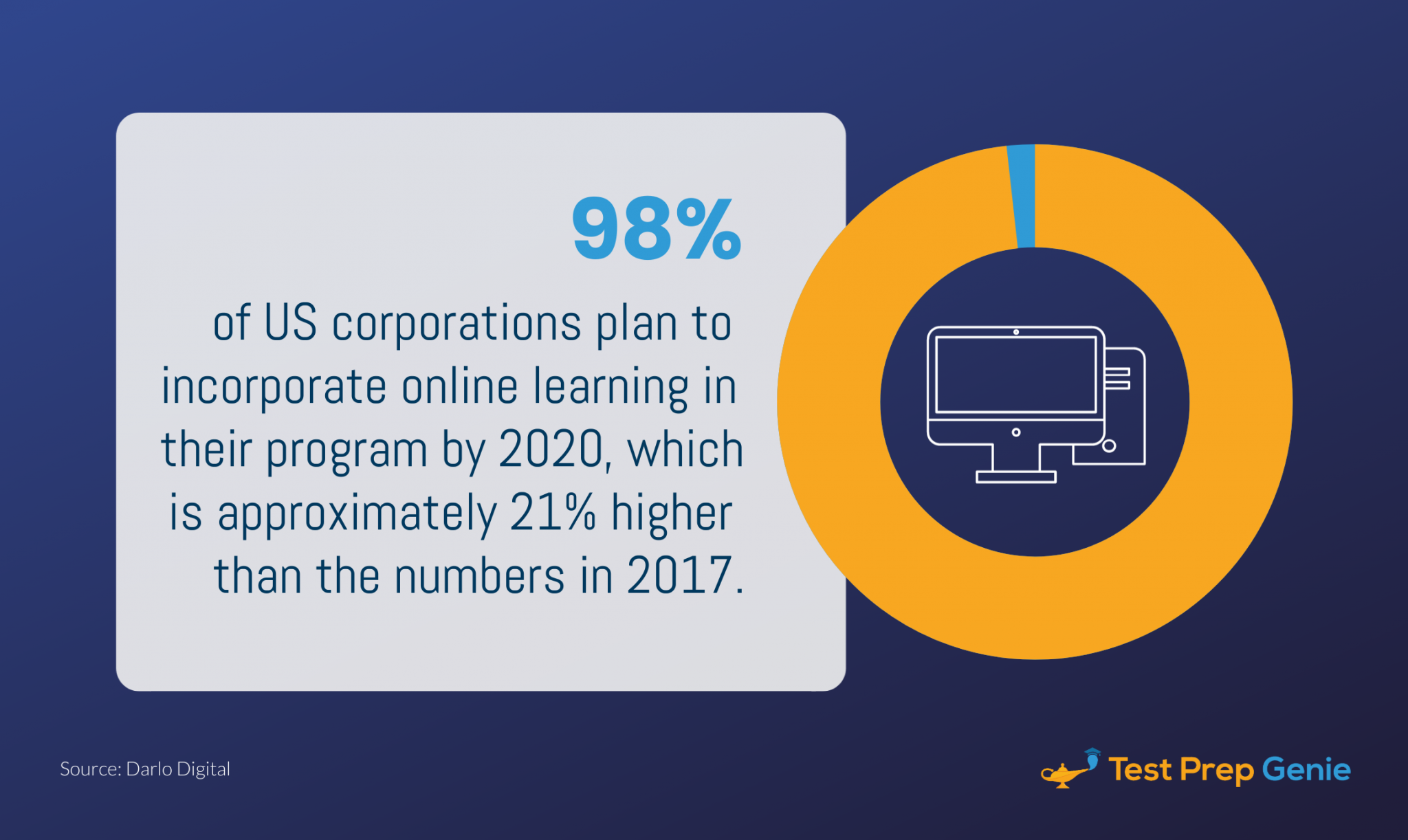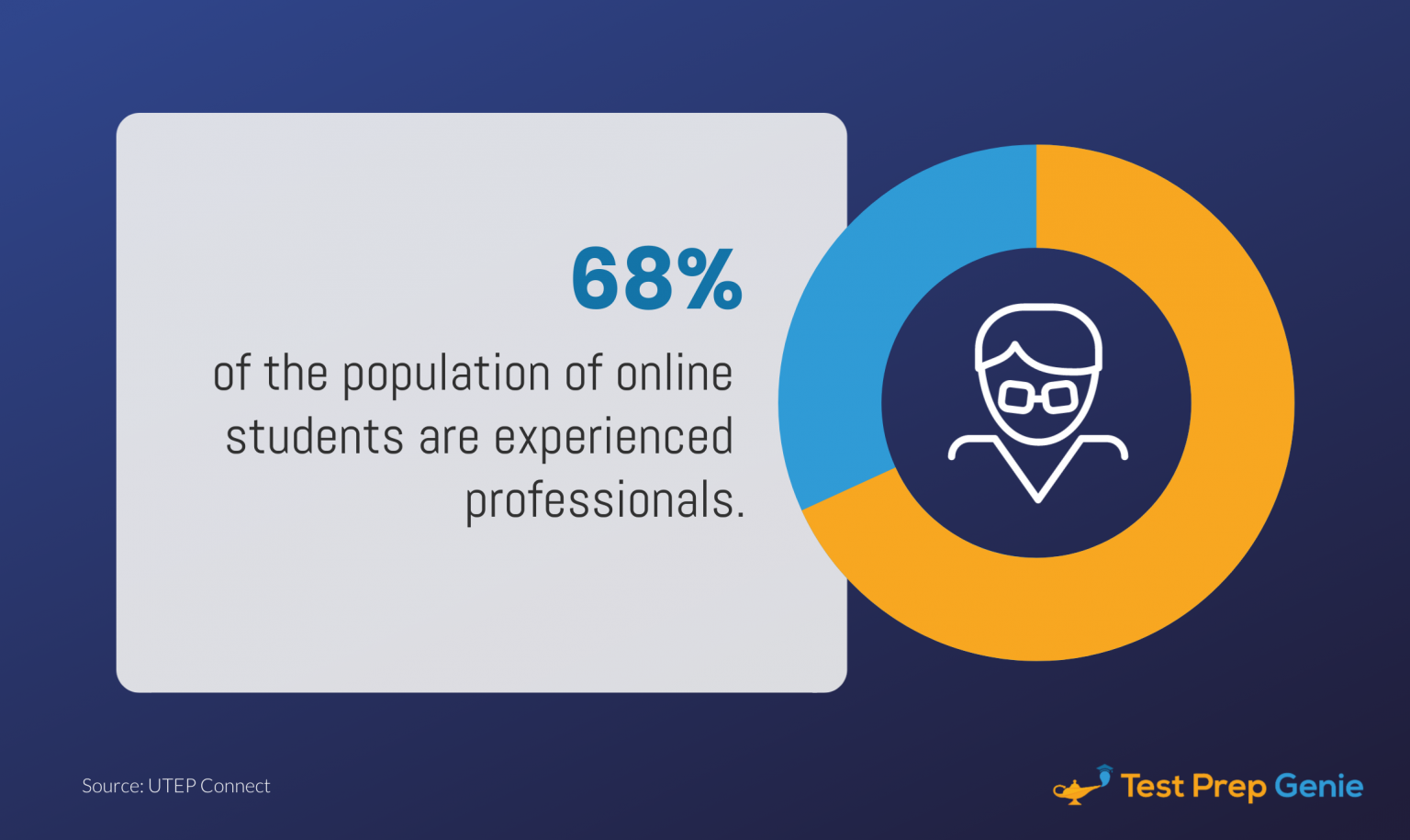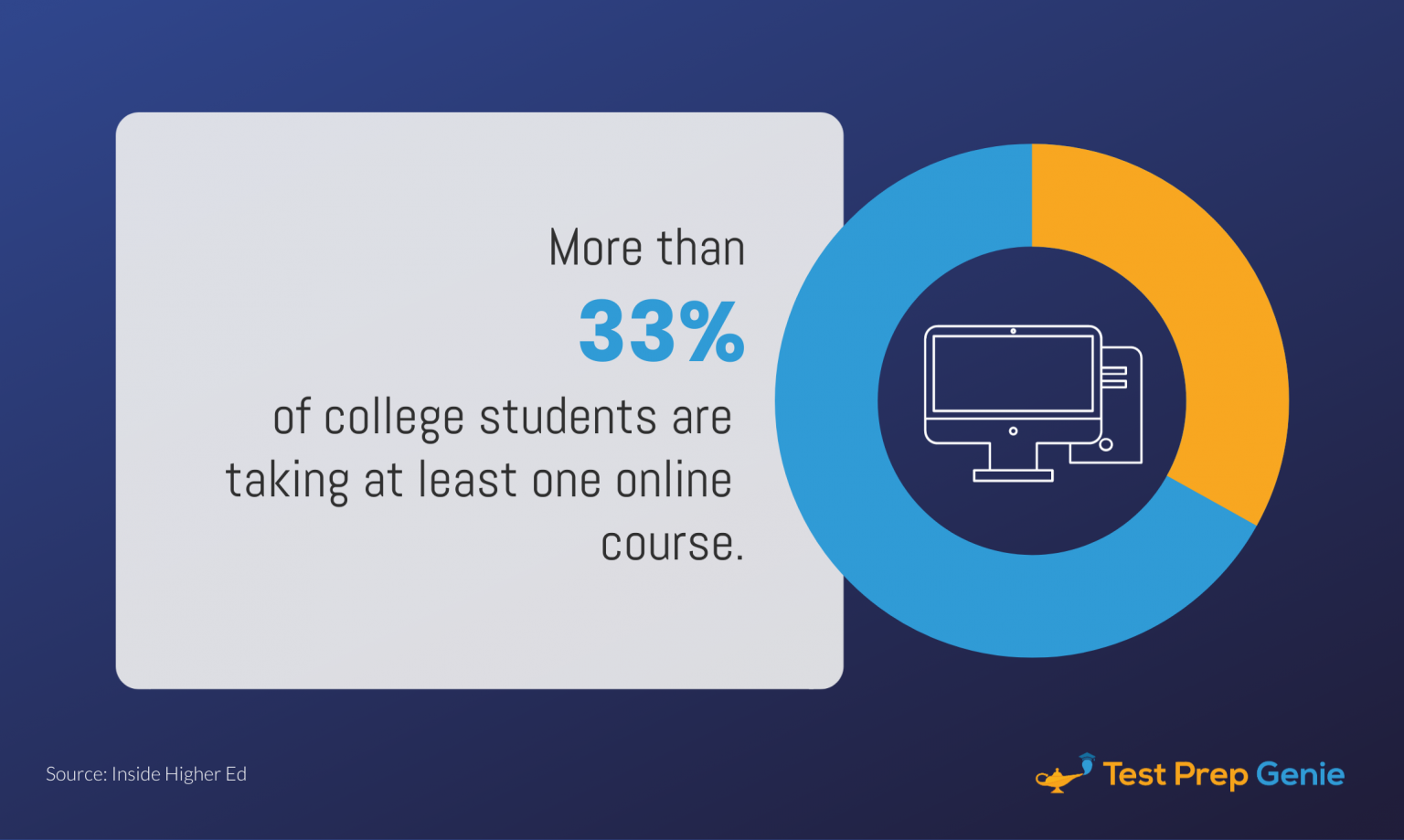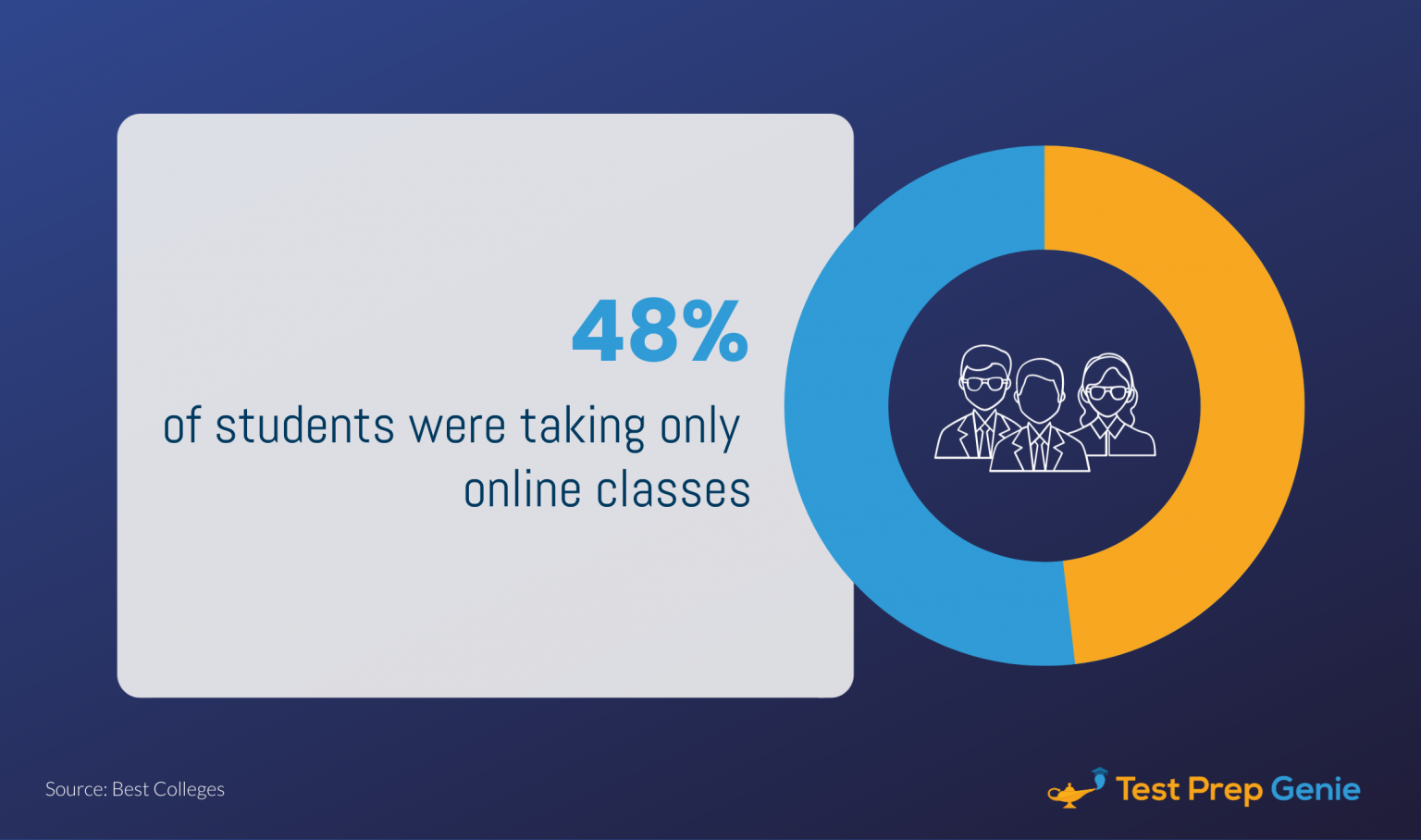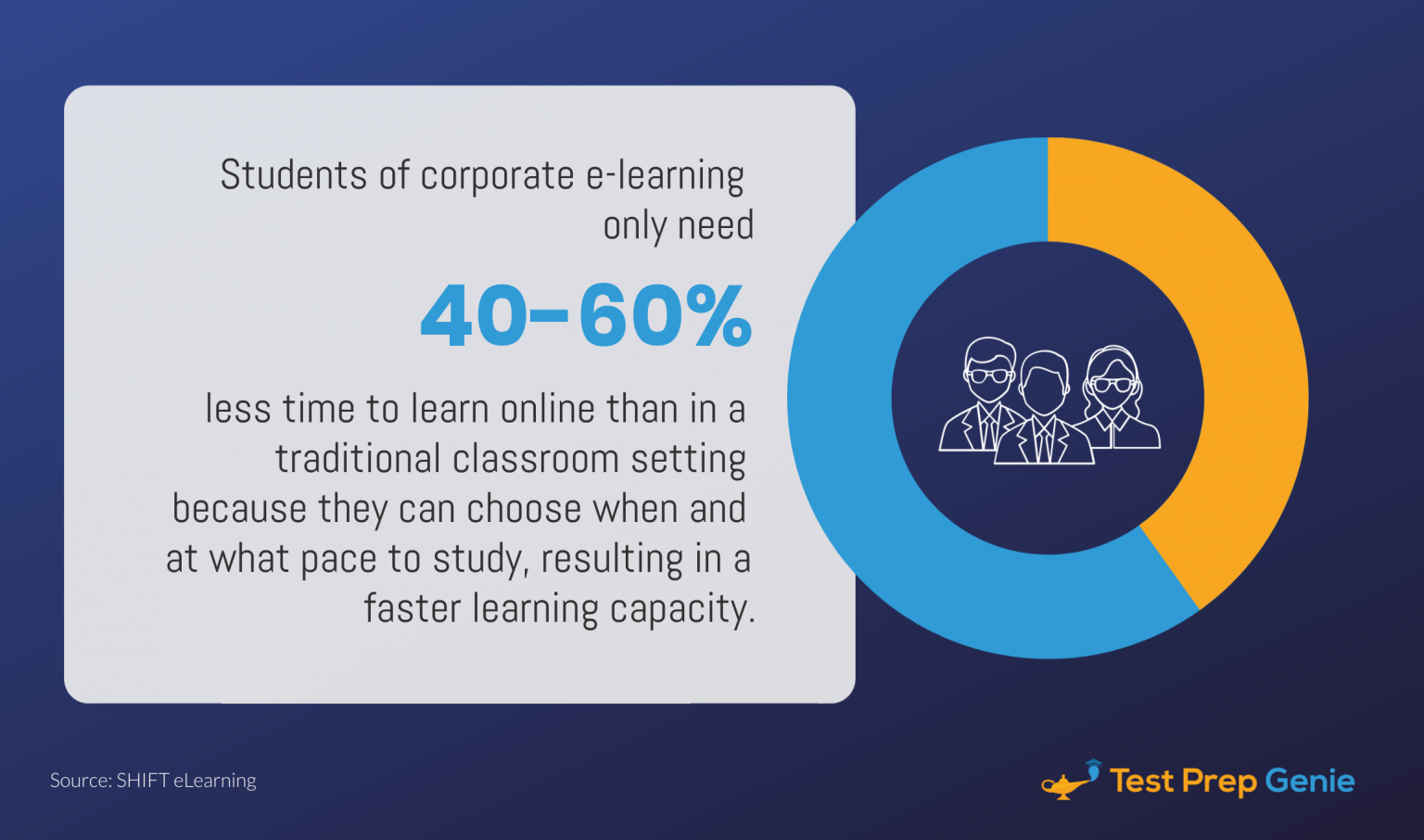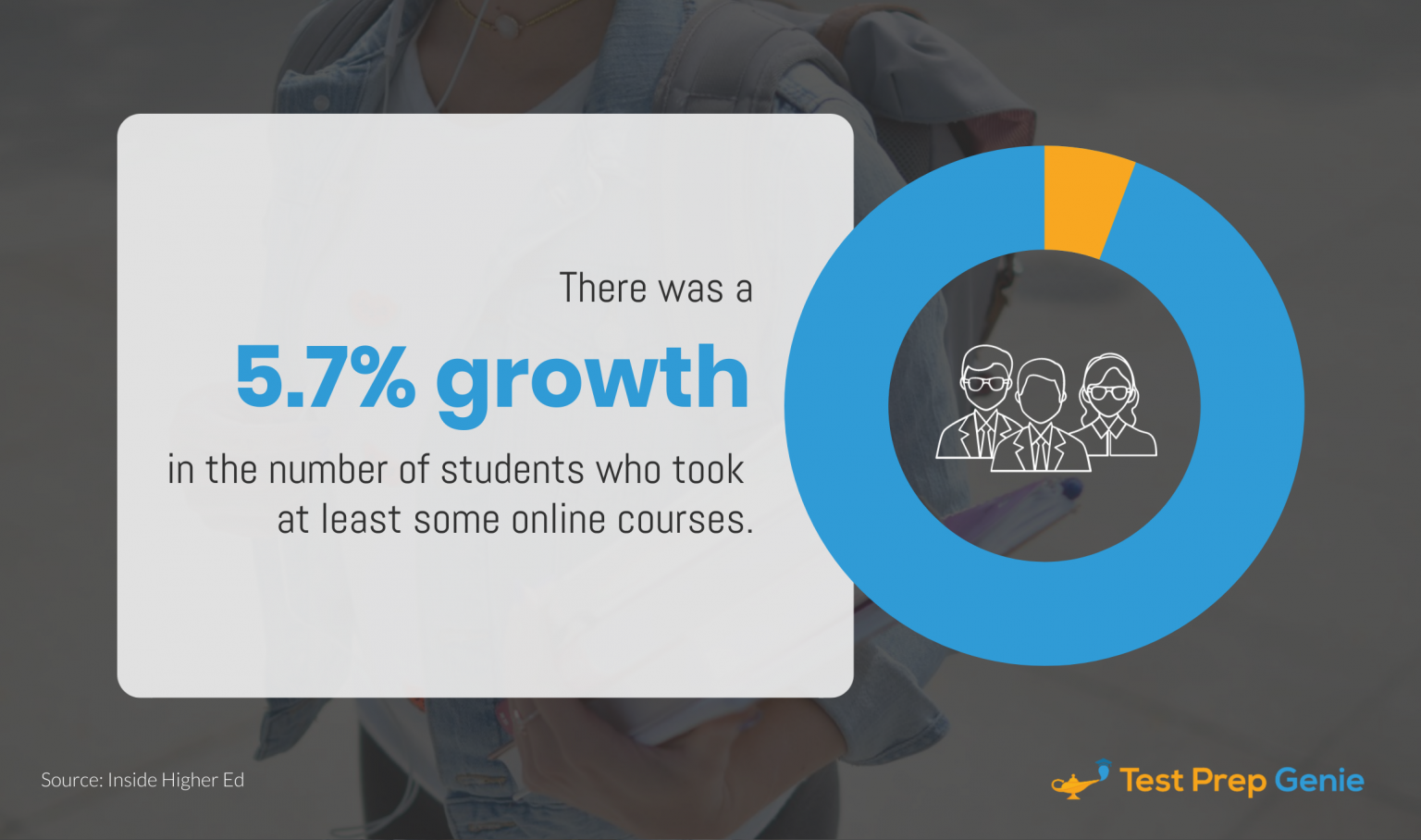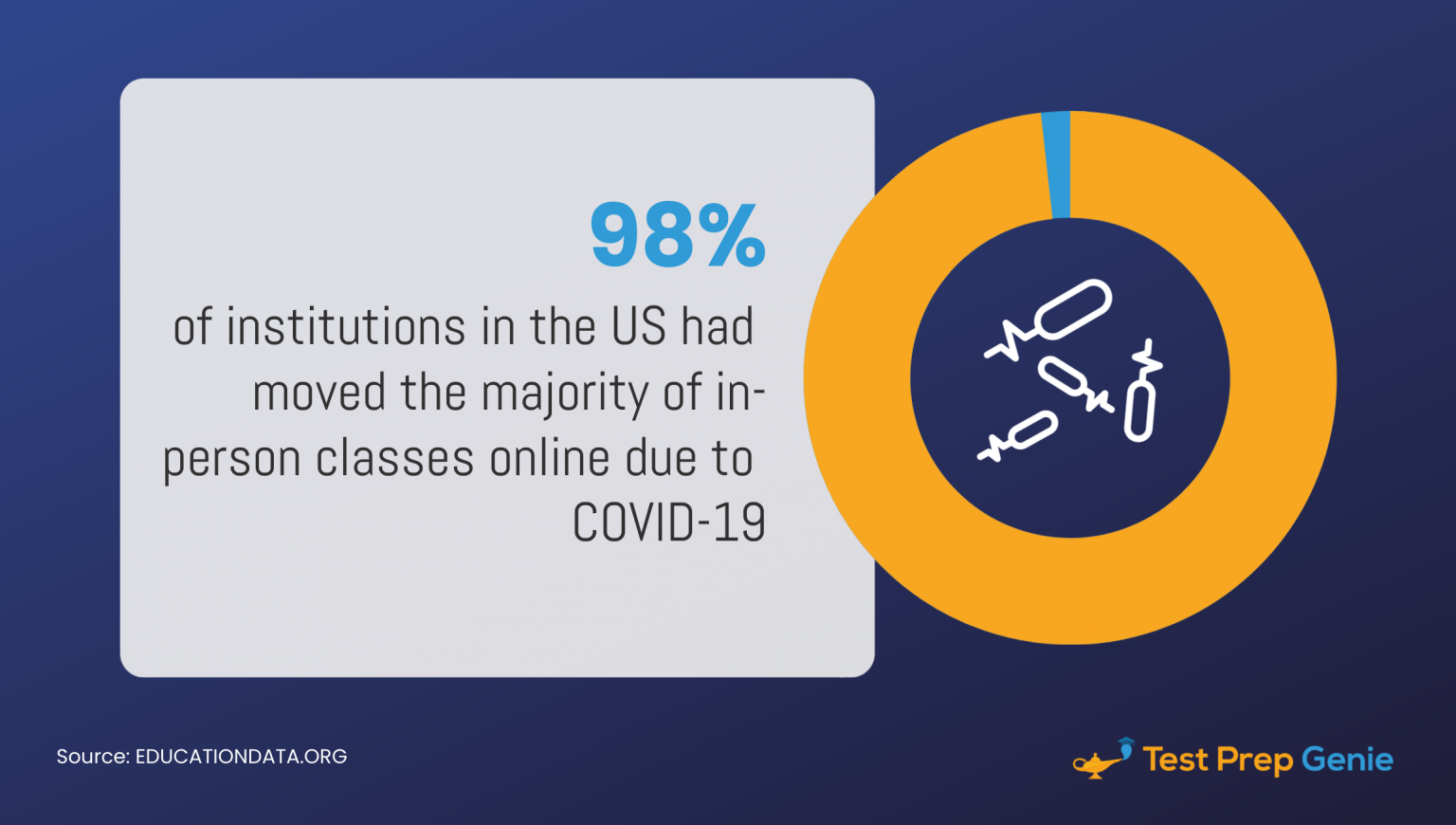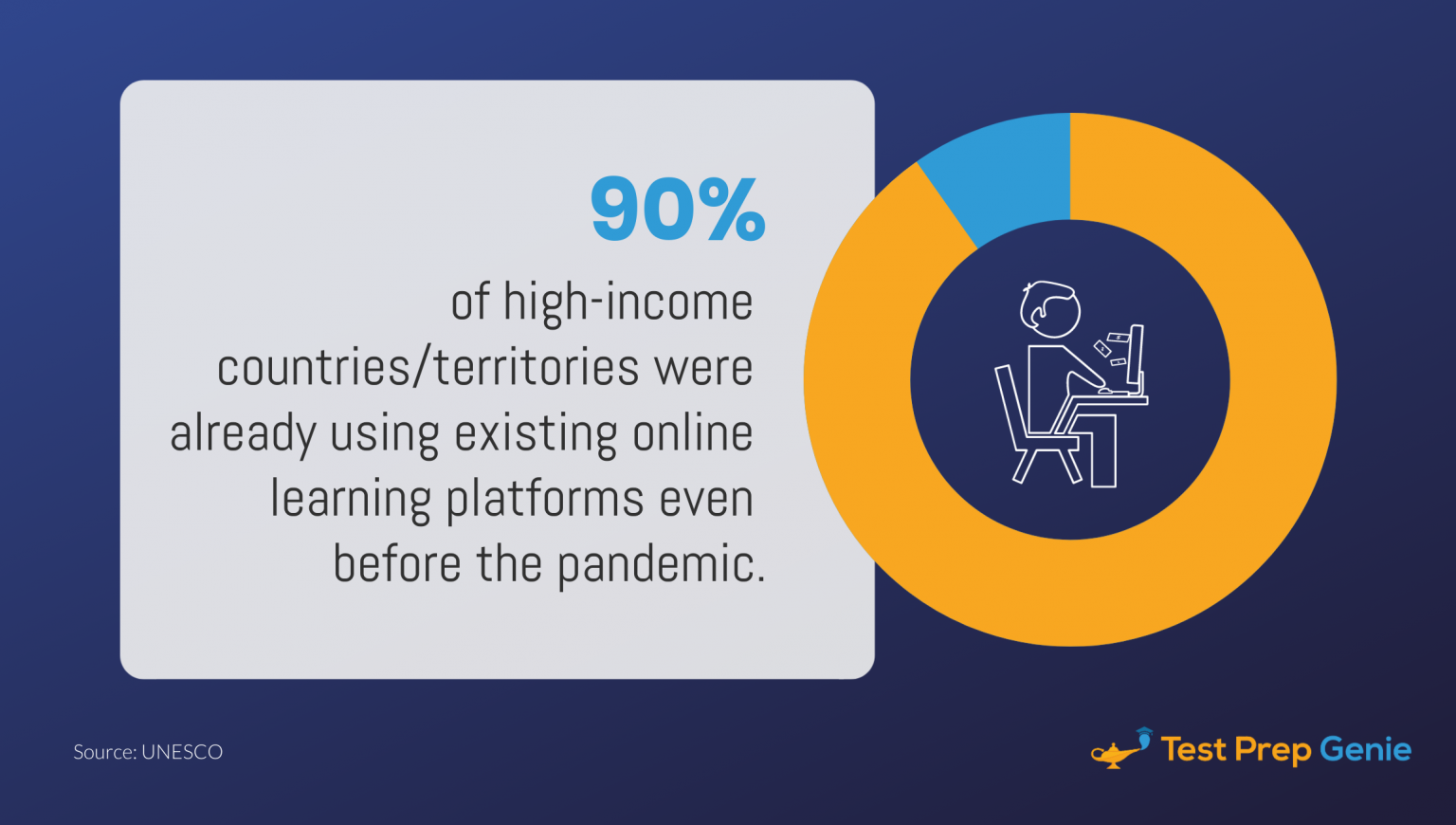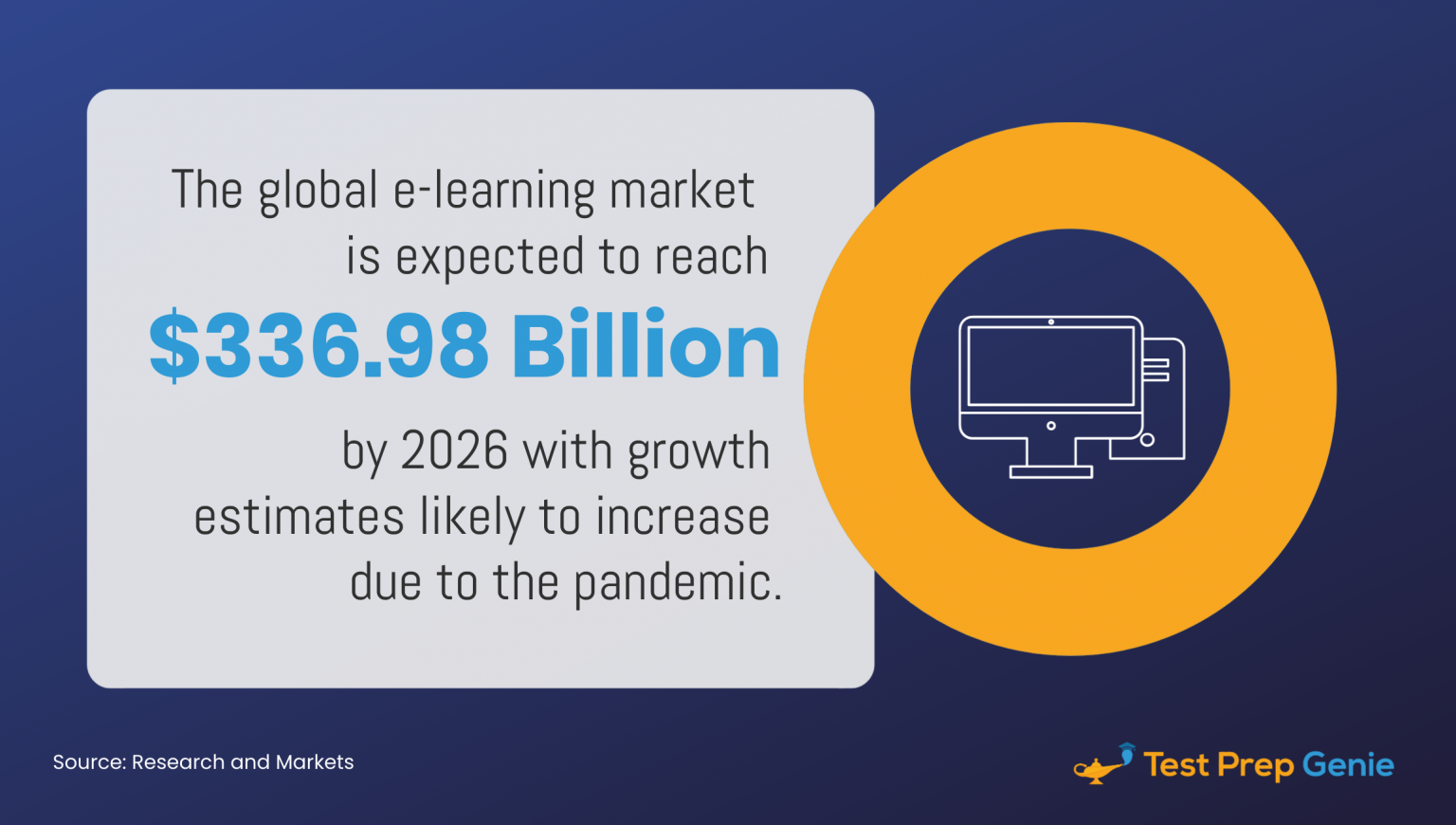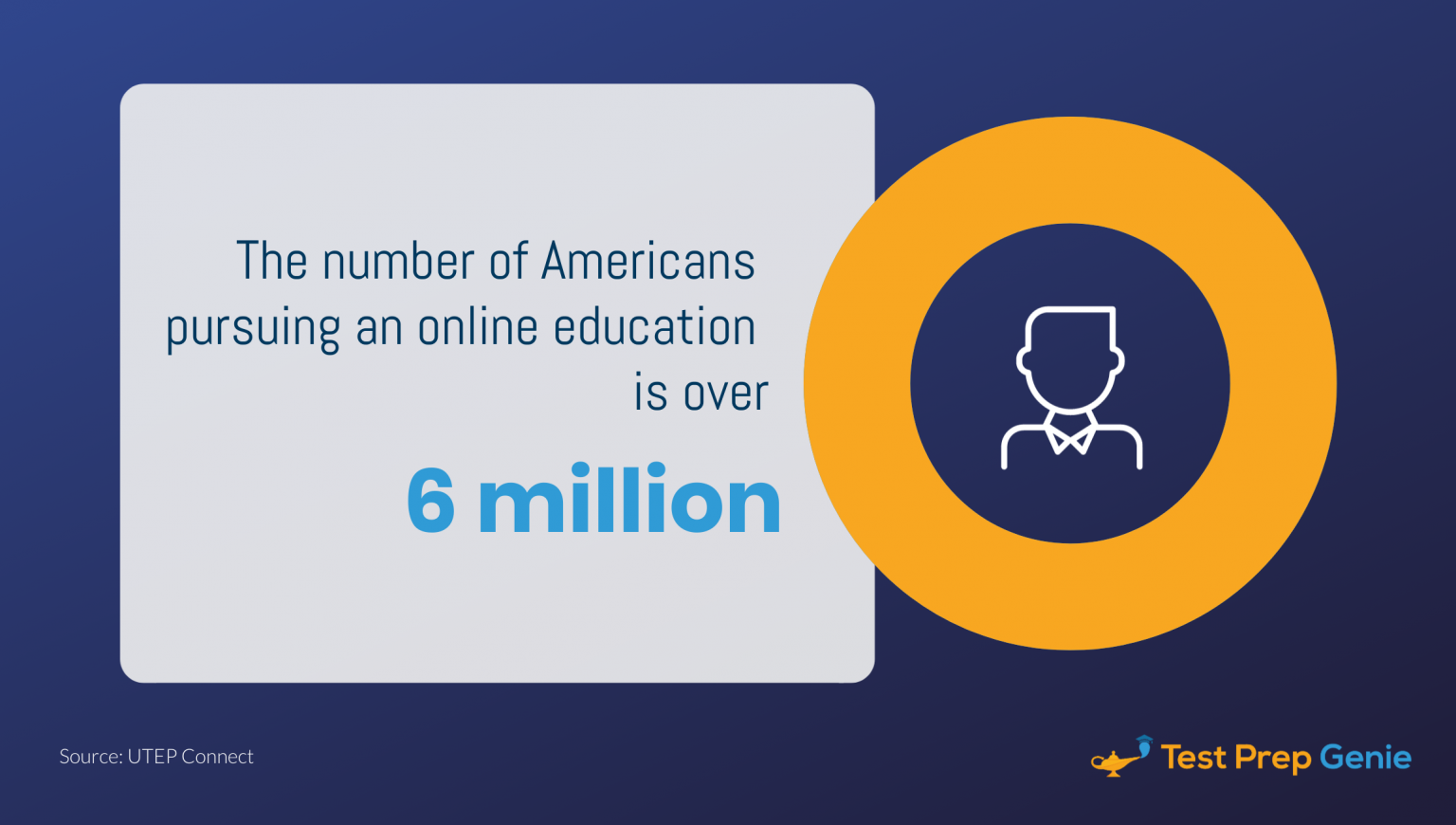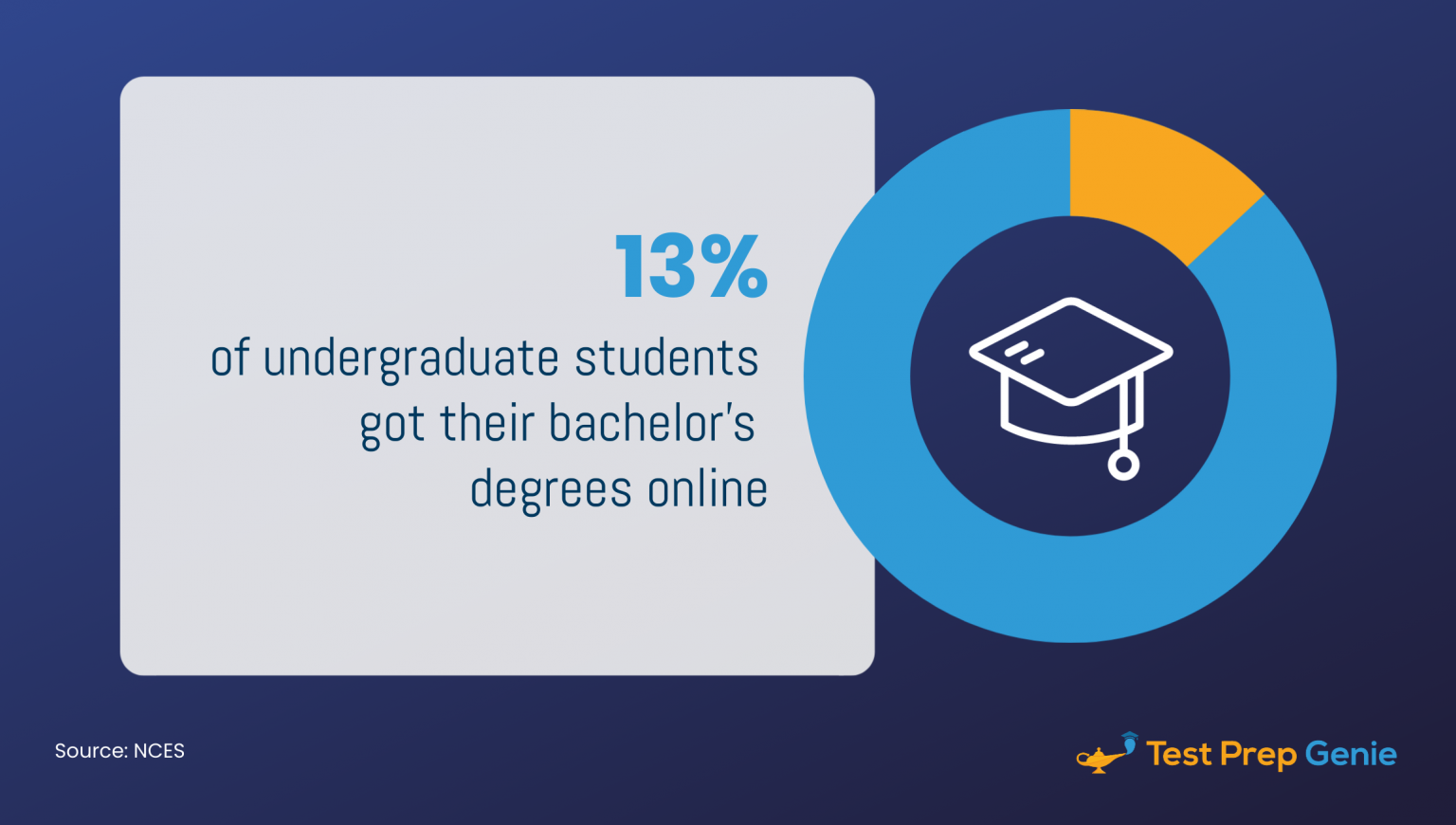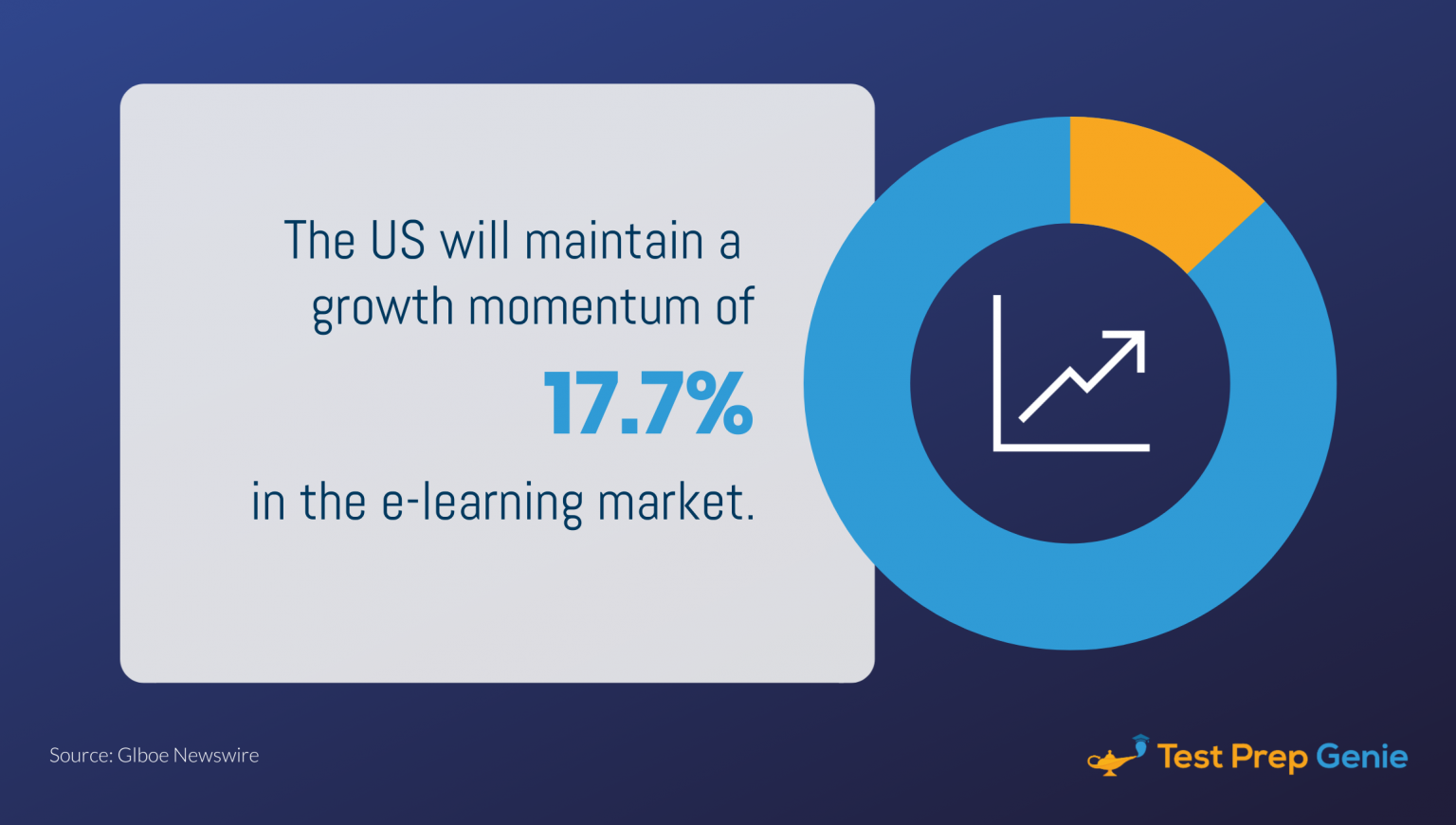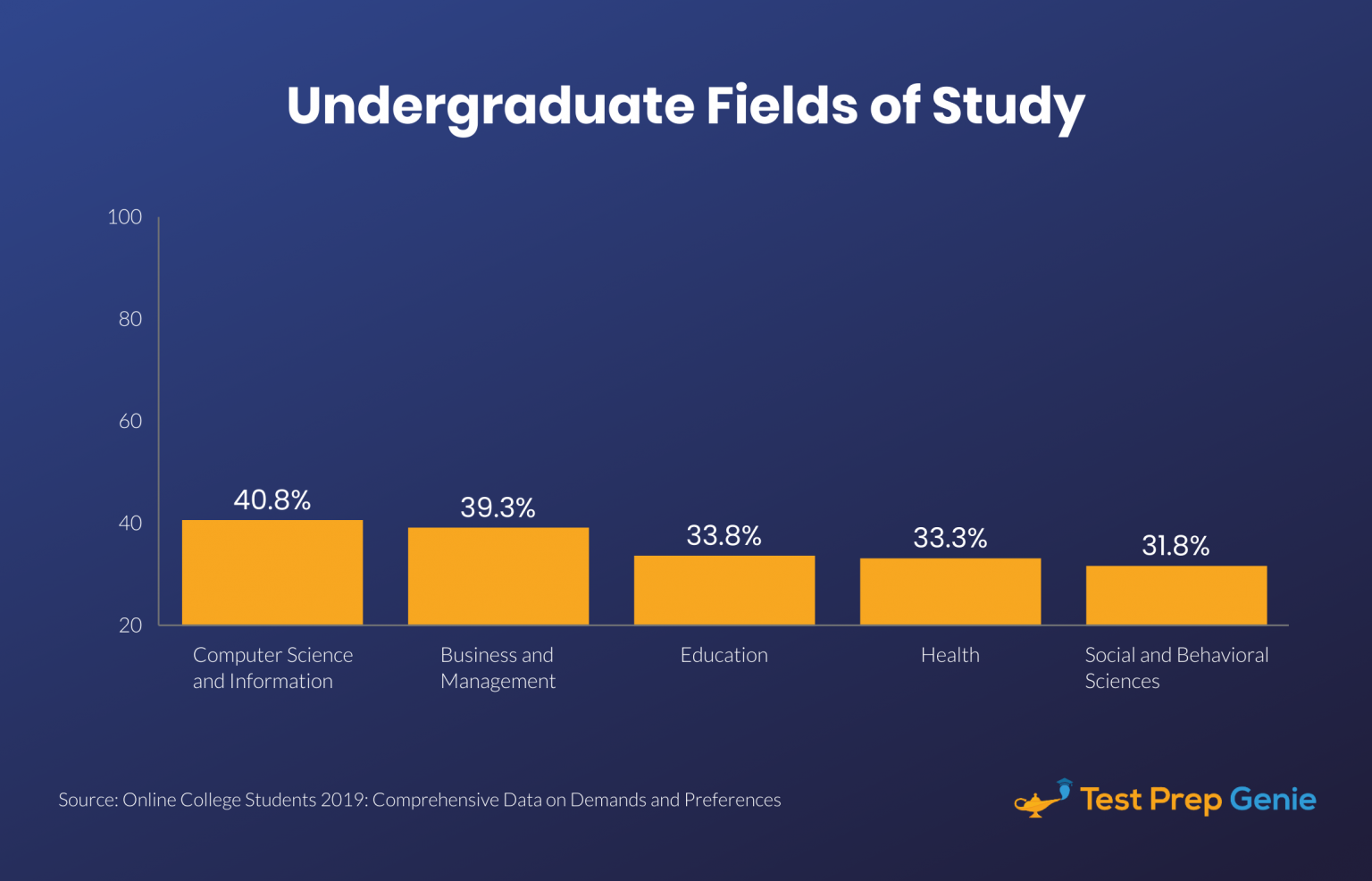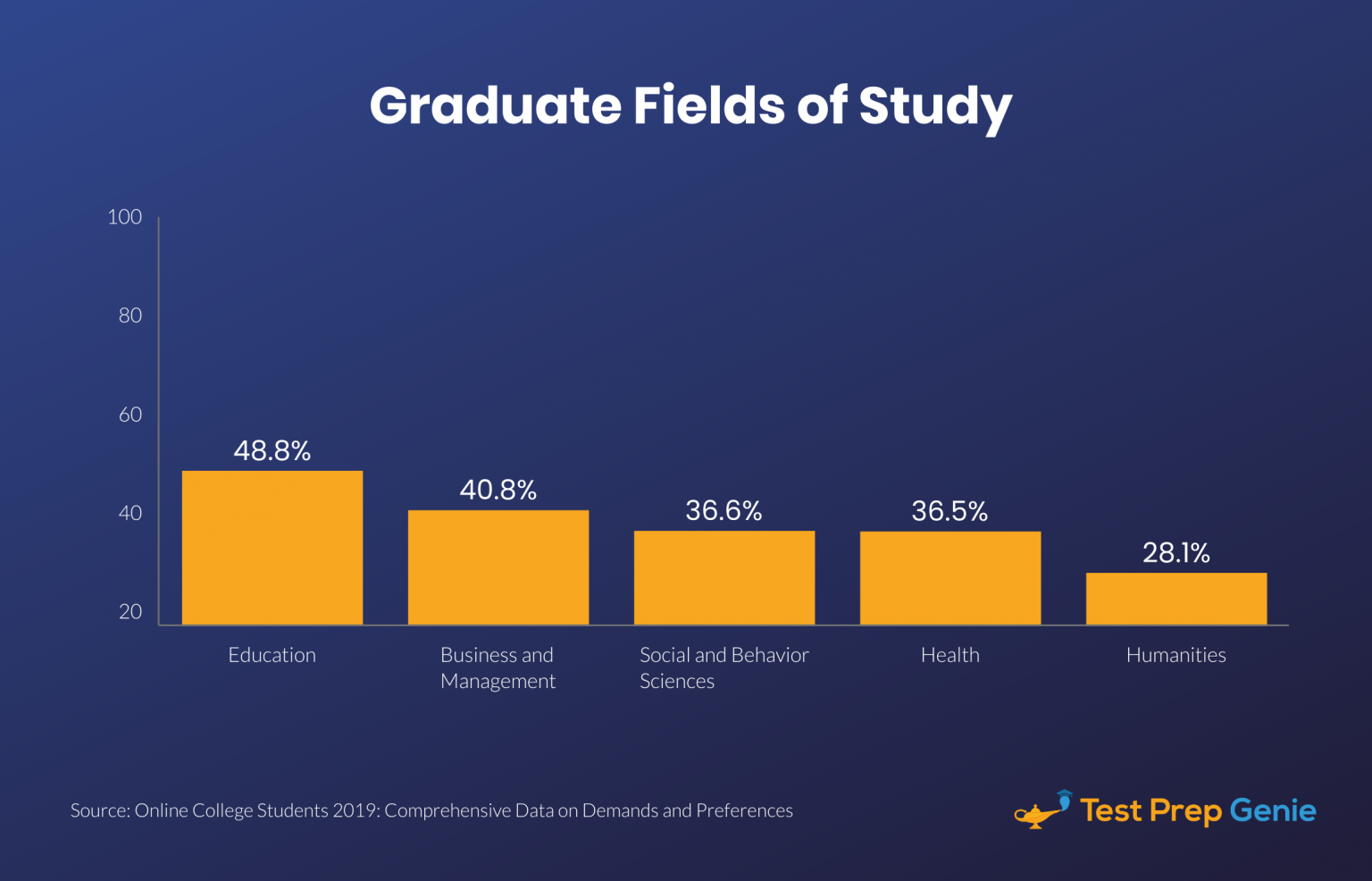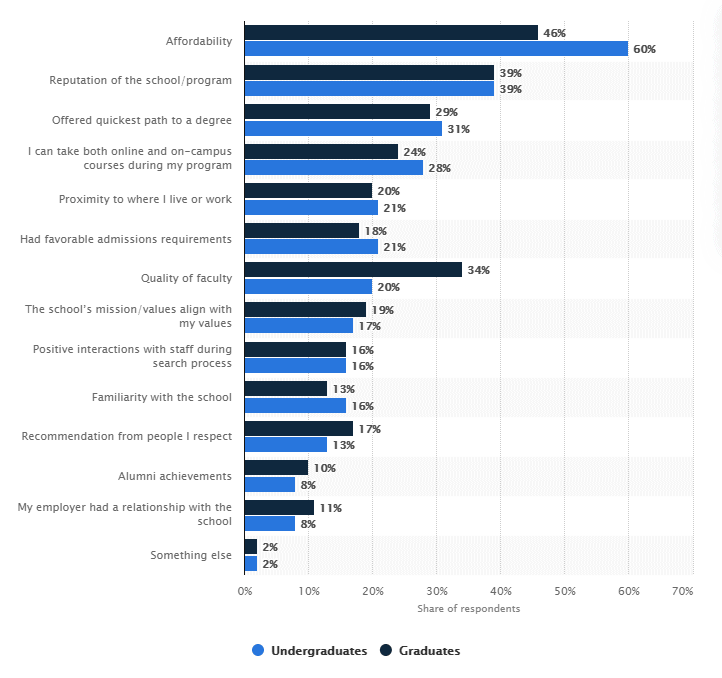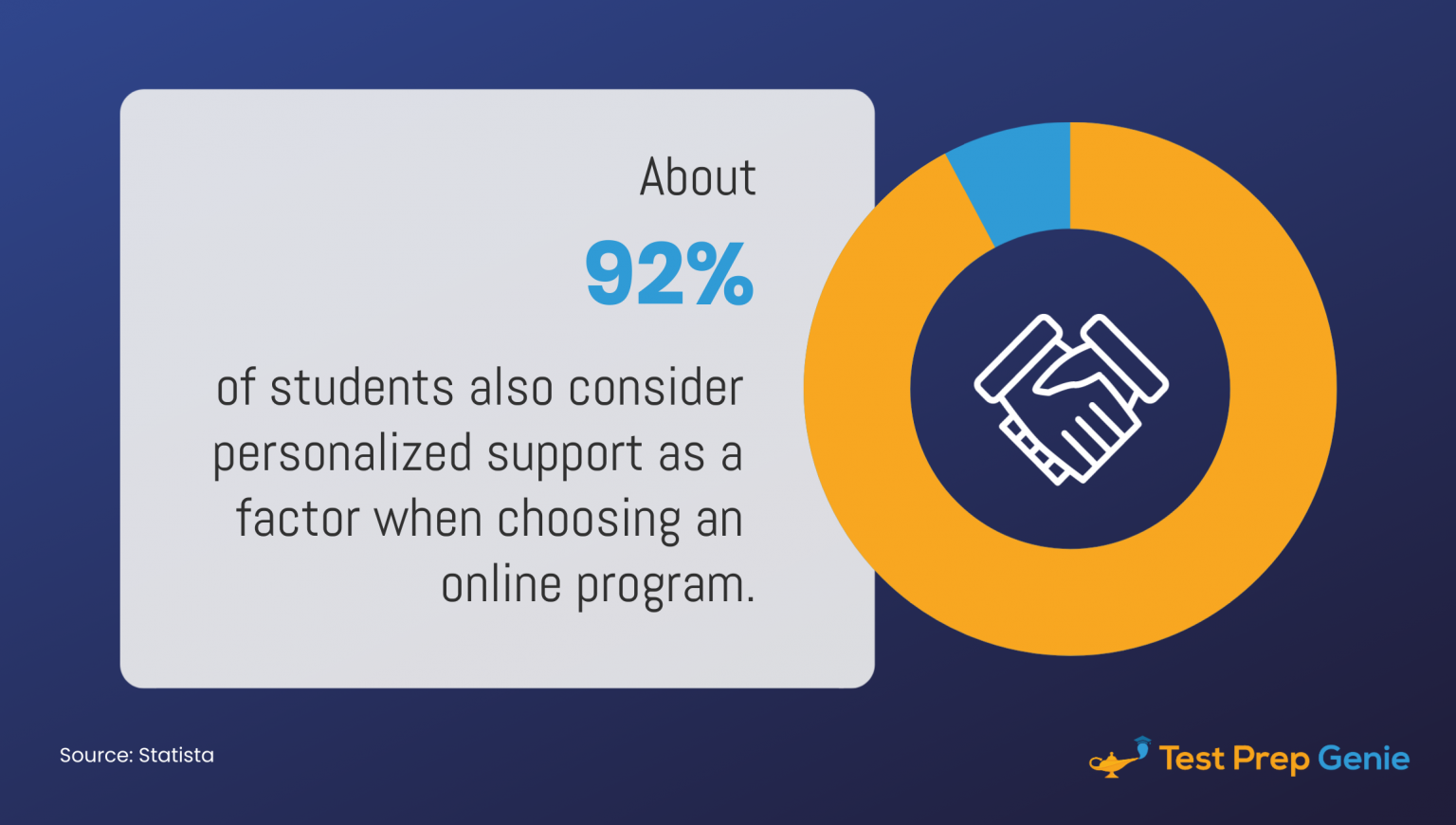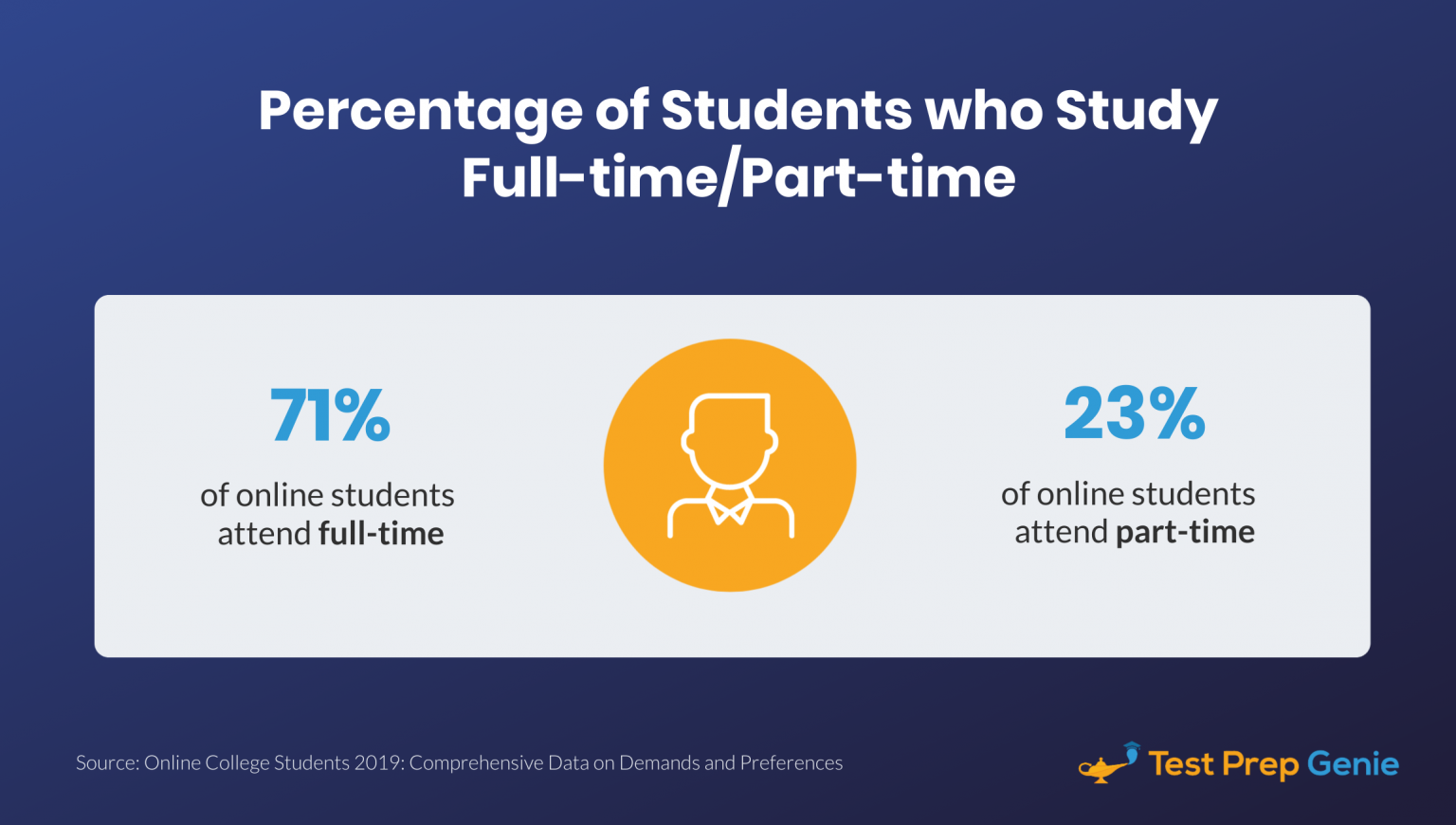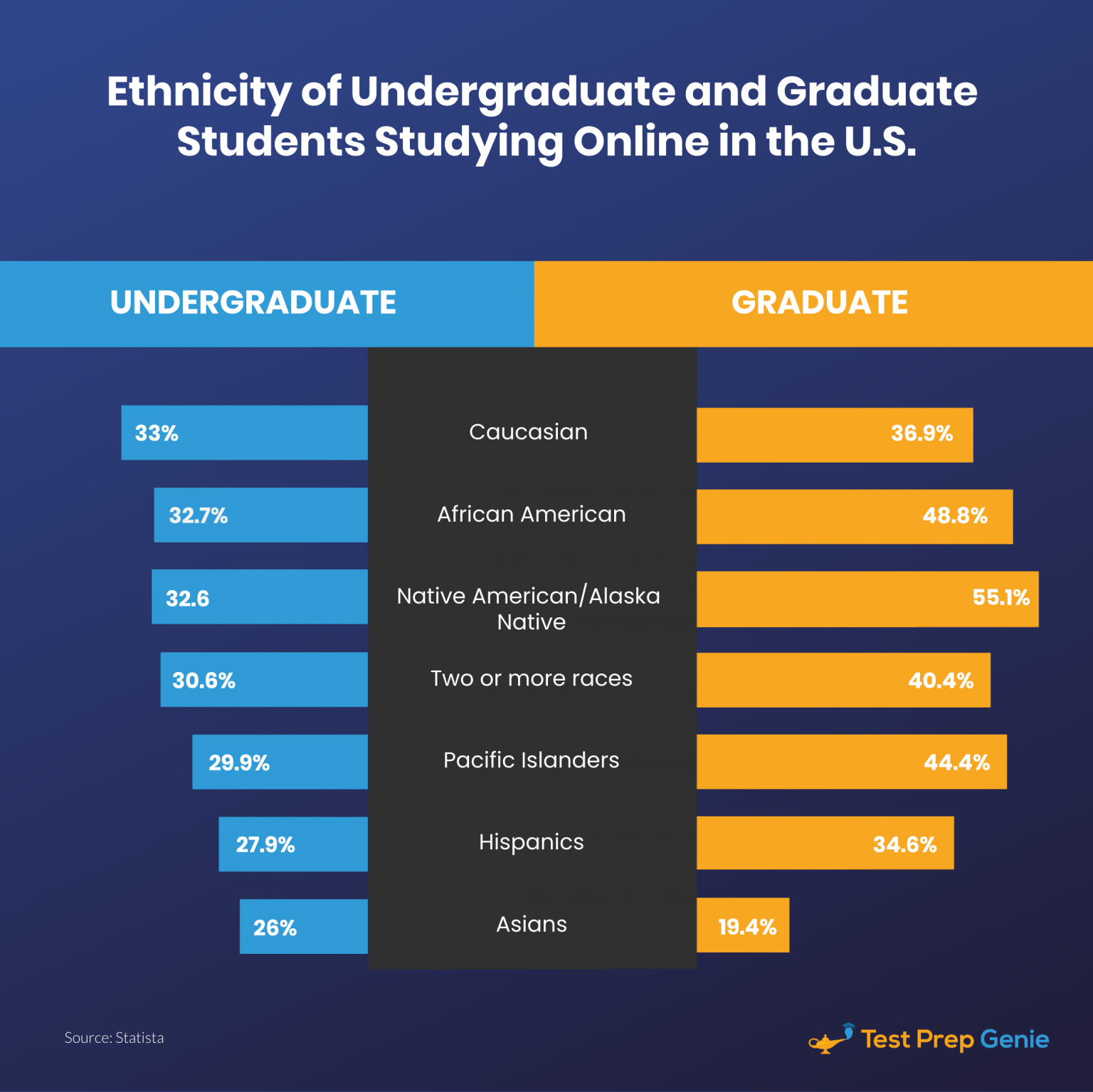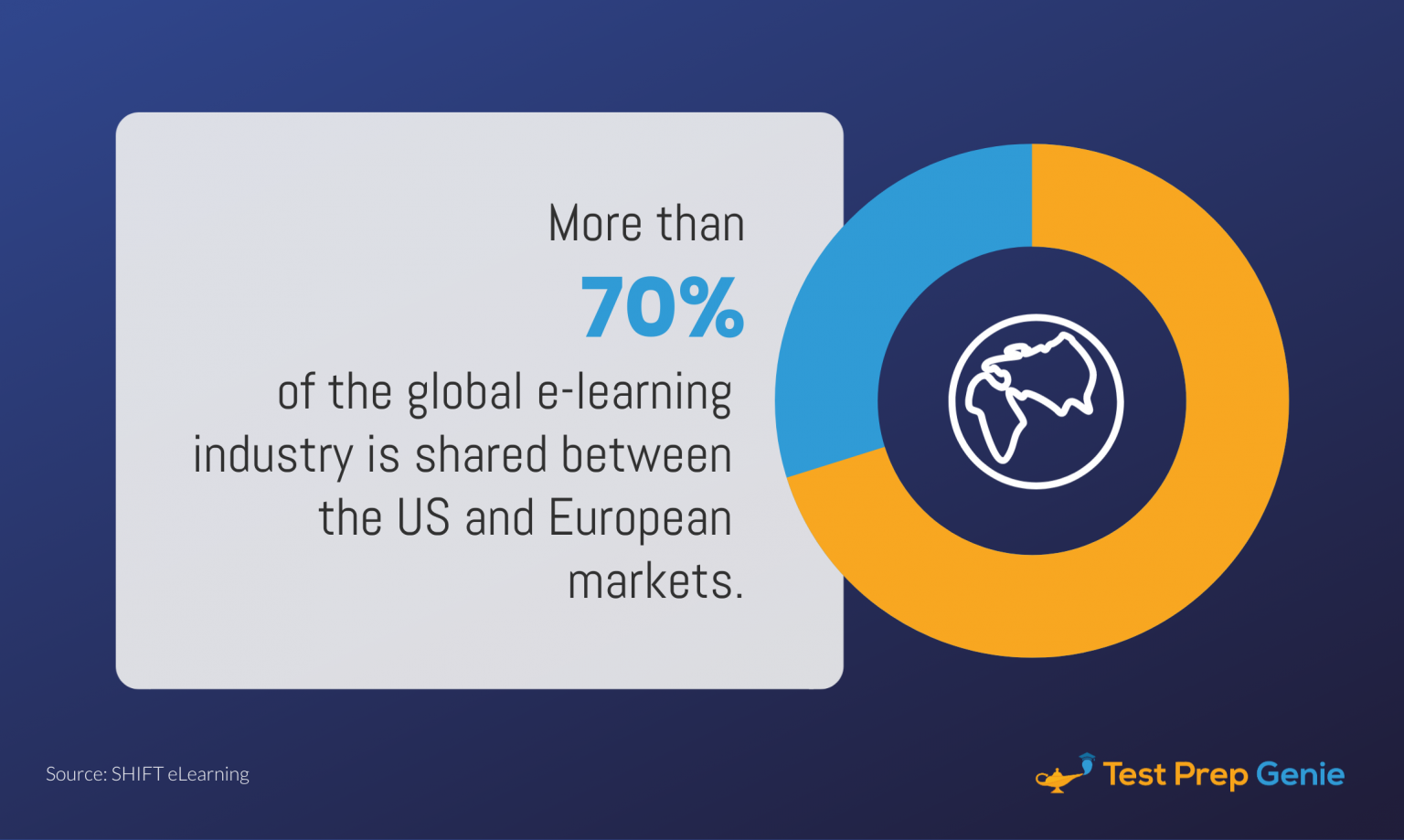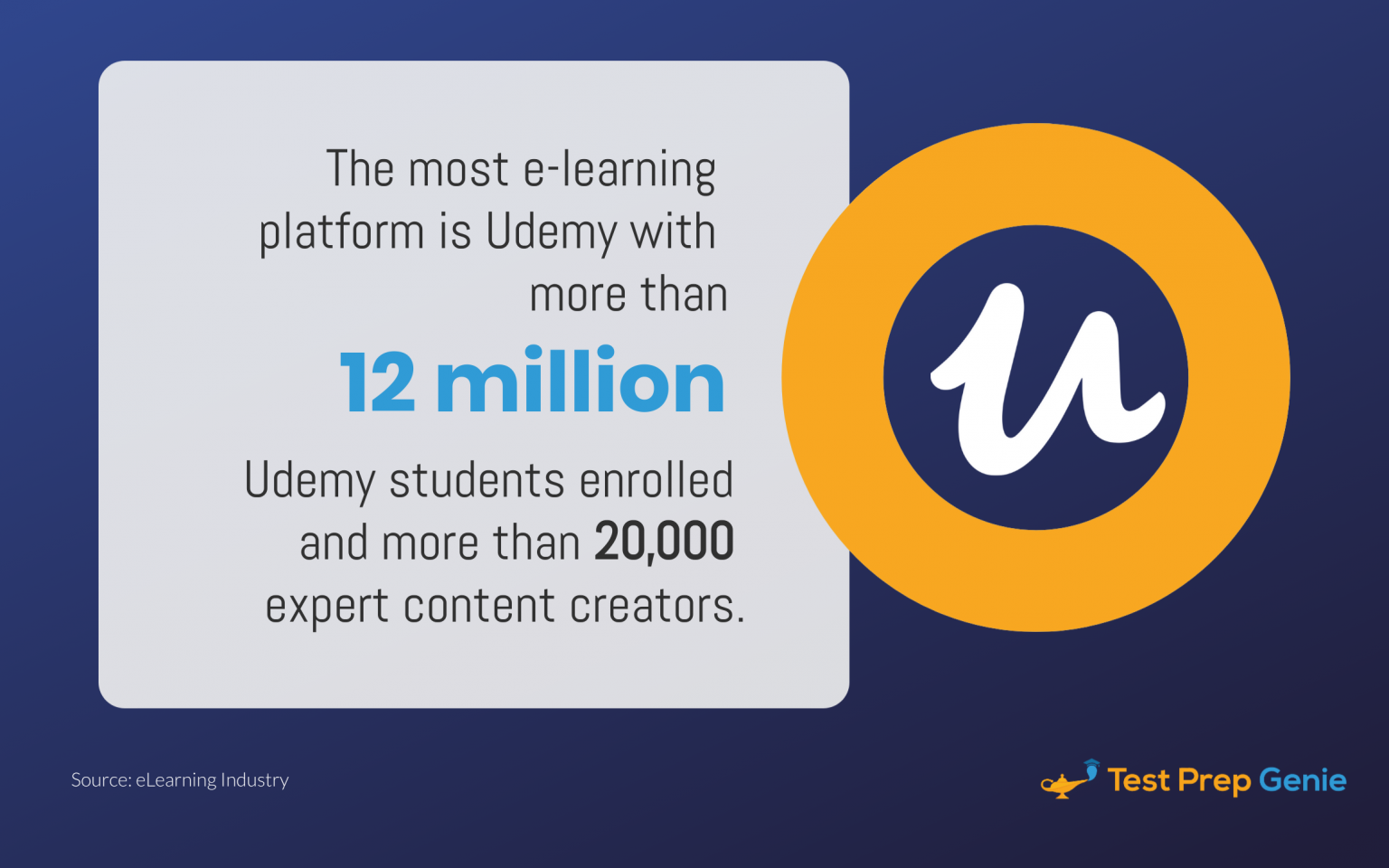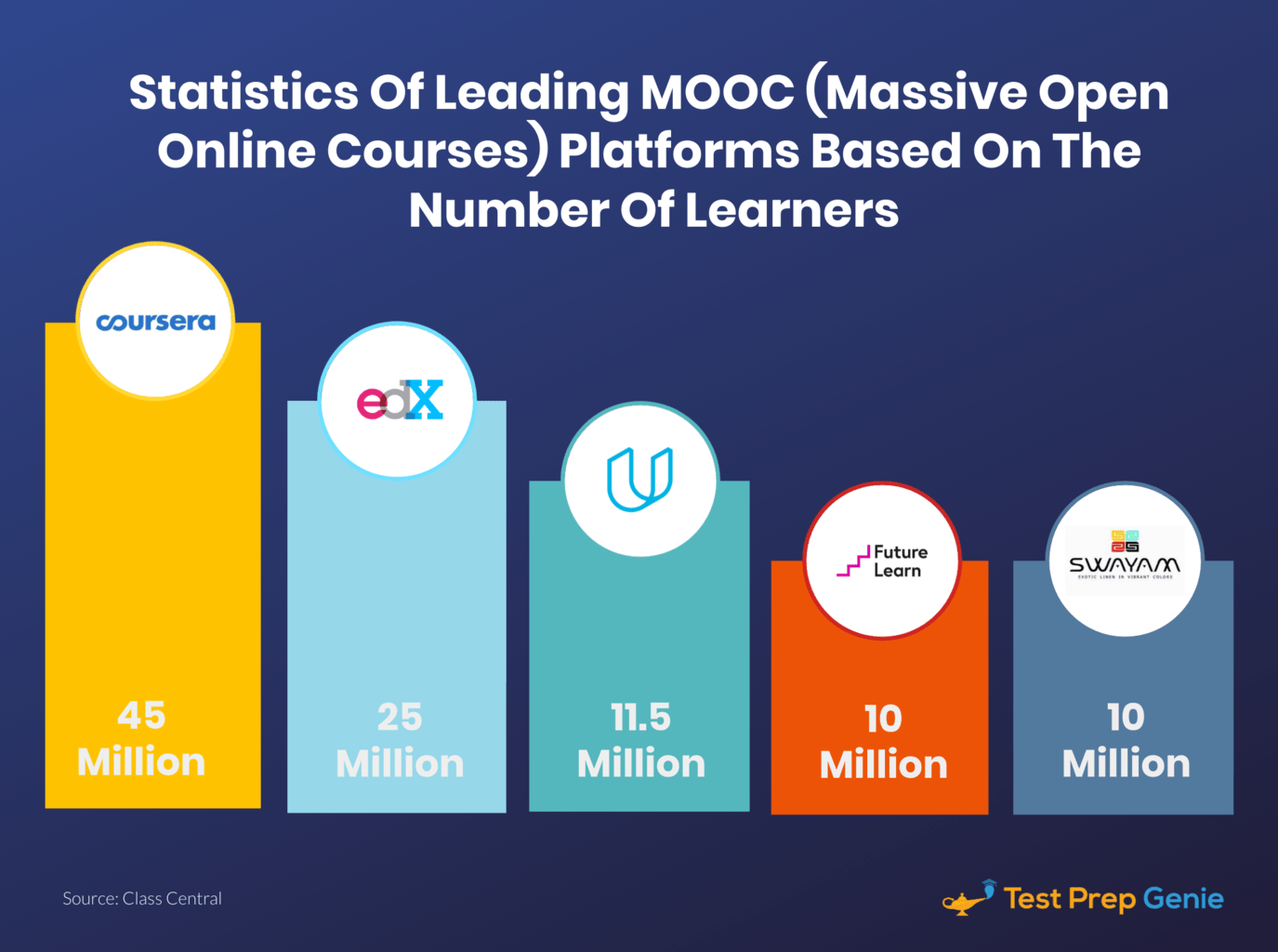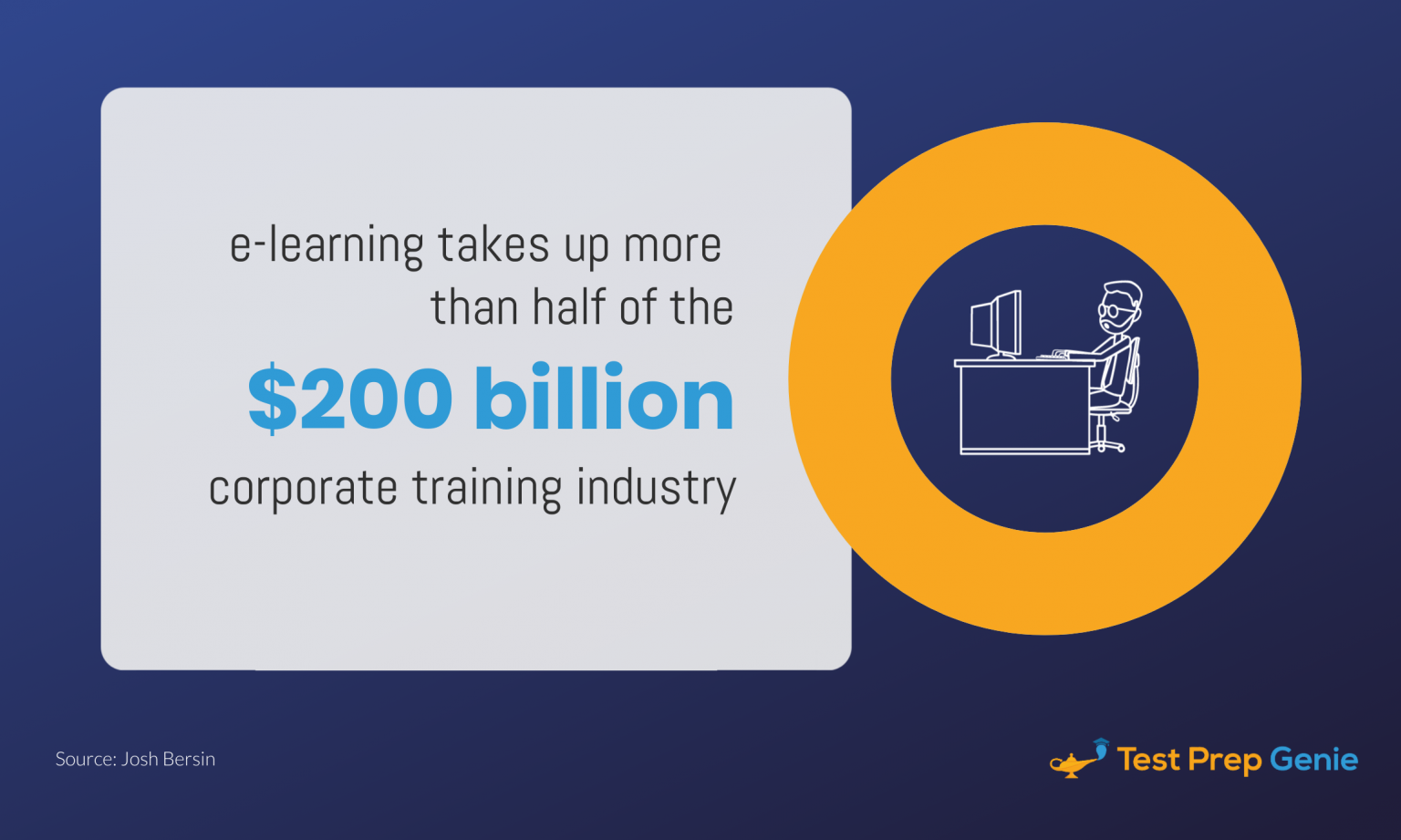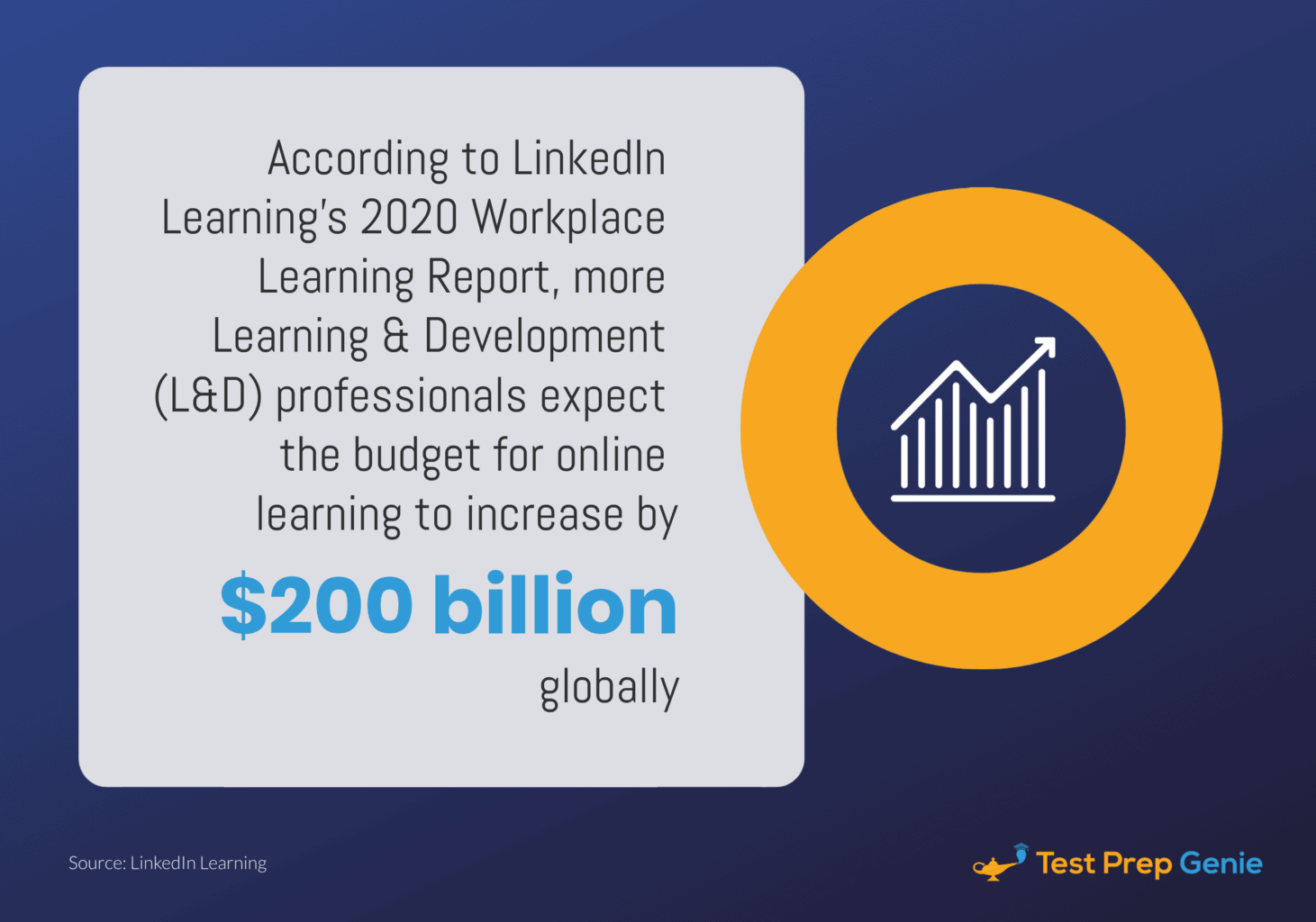63 Shocking Online Education Statistics You Need To Know In 2023
With physical distancing a must in the new normal, there’s no doubt that distance learning will be the new way to receive an education.
Even before the pandemic, however, online education statistics were already impressive. People used to study online when they can’t attend brick-and-mortar schools. This is no longer the most popular reason to enroll in distance learning.
The result?
An evolution of the online education landscape that has changed the way people learn outside of conventional academic settings.
Below are some distance learning statistics you should know about.
E-Learning Statistics That Are Sure to Impress You
Did you know that online education stats reveal retention rates are higher through e-learning than the traditional approach? This is just one of the more surprising distance learning stats, however.
- By 2025, it’s projected that the worldwide e-learning market will be worth $325 billion. (Forbes)
2. Between 2020 and 2024, the corporate e-learning market could increase by $38.09 billion. (Business Wire)
3. Between 2020 and 2024, the e-learning market in the US could grow by $12.81 billion. (Market Research)
4. The retention rates of the classic learning approach increased by just 8 to 10%. (SHIFT eLearning)
5. The retention rates of e-learning increased by 25% to 60%.
6. 42% of US organizations are seeing an increase in income because of e-learning. (eLearning Industry)
7. 98% of US corporations plan to incorporate online learning in their program by 2020, which is approximately 21% higher than the numbers in 2017.
8. Companies with “comprehensive training programs” have higher revenue per employee and higher profit margins by 218% and 24%, respectively, according to a survey of 2,500 companies. (Darlo Digital)
9. After switching to e-learning, IBM saved approximately $200 million. (SHIFT eLearning)
10. 68% of the population of online students are experienced professionals. (UTEP Connect)
11. More than 33% of college students are taking at least one online course. (Inside Higher Ed)
12. Global ed-tech investments in 2019 reached US$18.66 billion. (Markets Insider)
13. 48% of students were taking only online classes (Best Colleges)
14. Today, over 50% of all students in the US have taken an online course. (eLearning Industry)
15. Students of corporate e-learning only need 40-60% less time to learn online than in a traditional classroom setting because they can choose when and at what pace to study, resulting in a faster learning capacity. (SHIFT eLearning)
16. For every hour of eLearning, students learn 5x more material because the information is presented in smaller, more digestible chunks. This results in a higher retention rate. (eLearning Industry)
17. There was a 5.7% growth in the number of students who took at least some online courses. (Inside Higher Ed)
Impact of COVID-19 on both Online and Offline Education
18. 98% of institutions in the US had moved the majority of in-person classes online due to COVID-19 (EDUCATIONDATA.ORG)
19. 1.38 billion students worldwide are affected by school closures due to COVID-19. (Statista)
20. A quarter of a billion of full-time students in China resumed their studies through online platforms following mandates from the Chinese government. (Tencent)
21. Approximately 730,000 or 81% of K-12 students attend classes via Tencent Classroom Tencent K-12 Online School in Wuhan. (Tencent)
22. 90% of high-income countries/territories were already using existing online learning platforms even before the pandemic. (UNESCO)
23. From low and lower-middle-income countries/territories, only 53% are using existing online platforms. (UNESCO)
24. All education systems are suffering from insufficient internet capacity. (UNESCO)
25. As for perceived lack of adequate ICT/digital skills of essential facilitators, a lot of concerns fall on: (UNESCO)
-
- 80% of home-based on-line learning parents/caregivers
- 65% of teachers
- 48% of students
General Online Education Statistics
26. The global e-learning market is expected to reach $336.98 billion by 2026 with growth estimates likely to increase due to the pandemic. (Research and Markets)
27. The countries that invested the most in e-learning are the United States, India, China, South Korea, United Kingdom, and Côte d’Ivoire. (eLearningNews)
28. Packaged content or content-related online learning products takes up around 59% of the U.S. e-learning market share. (Statista)
29. The number of Americans pursuing an online education is over 6 million (UTEP Connect)
30. Between 2020-2024, the e-learning market in Europe is projected to grow by $24.23 billion, with a 12% CAGR. (Globe Newswire)
31. 13% of undergraduate students got their bachelor’s degrees online (NCES)
32. The rest of the European market is projected to add over US$14.9 Billion to the region’s e-learning share. (Globe Newswire)
33. The US will maintain a growth momentum of 17.7% in the e-learning market. (Globe Newswire)
34. In the next 5 to 6 years, Germany will add over US$12.3 billion within the e-learning industry in Europe. (Globe Newswire)
35. The academic market size in Japan will reach US$18.2 billion. (Globe Newswire)
36. Over the next couple of years, China exhibits a growth potential of 16.4%. (Globe Newswire)
Distance Learning Statistics Based on Fields of Study

Online colleges and other institutions offer a range of programs and courses that interested students can choose from. In terms of undergraduate and graduate fields of study, the percentage of courses offered are as follow:
37. Undergraduate fields of study are dominated by the top 5–Computer Science and Information (40.8% ), Business and Management (39.3%), Education (33.8%), Health (33.3%), and Social and Behavioral Sciences (31.8%). (Online School Center)
These are then followed by:
- Humanities at 30.8%
- Life Sciences at 26.7%
- Engineering at 23.2%
- Vocation and/or Technical Training at 22.3%
- Physical Sciences at 22.1%
- Mathematics at 20.4%
- Others at 30.5%
38. 27.6% of other courses are categorized as undeclared. (Online School Center)
39. For the graduate fields of study, the top 5 are Education (48.8%), Business and Management (40.8%), Social and Behavior Sciences (36.6%), Health (36.5%), and Humanities (28.1%). (Online School Center)
The rest are:
- Mathematics, Engineering, and Computer Science at 25.5%
- Life and Physical Sciences at 13.9%
- Law at 10.3%
- Other at 38.6%
Common Factors Considered When Choosing an Online Program
While there are many reasons a student chooses to study online than in a traditional setting, online education statistics revealed the top factors most students consider.
40. According to a 2019 survey participated by 1,500 online students, 60% of graduates and 46% of undergraduates consider affordability as the top#1 consideration. This is followed by: (Statista)
Reputation of the school/program
- Undergraduates: 39%
- Graduates: 39%
Program offered the quickest path to acquiring a degree
- Undergraduates: 31%
- Graduates: 29%
Offered blended online and off-campus learning
- Undergraduates: 28%
- Graduates: 24%
Proximity to home and/or work
- Undergraduates: 21%
- Graduates: 20%
Favorable admission requirements
- Undergraduates: 21%
- Graduates: 18%
Quality of faculty
- Undergraduates: 20%
- Graduates: 34%
Matching values and culture
- Undergraduates: 17%
- Graduates: 19%
Positive interactions with school staff
- Undergraduates: 16%
- Graduates: 16%
Familiarity with school
- Undergraduates: 16%
- Graduates: 13%
41. About 92% of students also consider personalized support as a factor when choosing an online program (Statista)
Number of Online Undergraduate and Graduate Students with Prior College Experience
Online College Students 2019 survey conducted by The Learning House conducted a survey in 2019 to look into various aspects concerning college students enrolled in some form of distance learning.
With regards to whether they have prior college experience, the statistics show:
42. Undergraduate students
-
-
- 87% have transfer credits before they enrolled in their latest undergraduate online program.
- 55% of them earned credits from one institution
- 51% of them earned their credits through both classroom and online courses
- 45% were enrolled in college within the past couple of years
- 1 in 5 was enrolled within five or more years ago
-
43. Graduate students
-
- 39% were enrolled in an undergraduate program within the last 2 years
- 37% were enrolled in an undergraduate program within the last 5 or more years
How many of them study online full-time or part-time?
44. 71% of online students attend school full-time
45. 23% of them attend school part-time
Why did they decide to study online?
46. 63% of them enrolled online as it works best for their current work/life responsibilities
47. 35% of them enrolled online as it is their preferred way to learn
48. 3% of them enrolled online because their study area of interest is only available online
49. In terms of career objective, undergraduate and graduate students have varying motivations for acquiring an online degree.
To start a new career to earn more money
- Undergraduate: 33%
- Graduate: 26%
To start a new career more aligned to interests
- Undergraduate: 24%
- Graduate: 22%
To get my first professional/salaried job
- Undergraduate: 20%
- Graduate: 14%
To get a promotion within their current profession
- Undergraduate: 9%
- Graduate: 17%
To increase salary within their current professions
- Undergraduate: 7%
- Graduate: 11%
Source: Online College Students 2019: Comprehensive Data on Demands and Preferences
Online Students Demographics
50. Age
-
- The average online student is 32 years old (no new available data) UTEP Connect
- Students between the ages of 15-23 make up 24.5% of the population enrolled in some form of distance education. (Wikipedia)
- Students between the ages of 24-29 make up 35.5% of the population enrolled in some form of distance education. (Vedamo)
- Students who are 30+ years of age make up 41% of the population enrolled in some form of distance education. (Vedamo)
51. Gender and Education Level of students studying online in the U.S. (Statista)
Undergraduate
-
-
- 65% are female
- 35% are male
-
Graduate
-
-
- 54% are female
- 46% are male
-
52. Ethnicity of undergraduate and graduate students studying online in the U.S.
Undergraduate Students
- Caucasian – 33%
- African American – 32.7%
- Native American/Alaska Native – 32.6%
- Two or more races – 30.6%
- Other ethnicities are Pacific Islanders (29.9%), Hispanics (27.9%), and Asians (26%).
Graduate Students
- Native American/Alaska Native – 55.1%
- African American – 48.8%
- Pacific Islander – 44.4%
- Two or more races – 40.4%
- Caucasian – 36.9%
- The rest of the population is composed of Hispanics (34.6%) and Asians (19.4%).
Source: Statista
Statistics on E-Learning Market Share
53. More than 70% of the global e-learning industry is shared between the US and European markets. (SHIFT eLearning)
54. Lynda.com is now LinkedIn Learning after LinkedIn purchased it in 2015 for USD$1.5 billion. (Forbes)
55. The American educational technology company Blackboard was used by 30% of institutions in the US and Canada in 2017. (Forbes)
56. In 2017, Sony sold $500 million worth of units of their PlayStation VR, which is proof of the growth of Virtual and Augmented reality learning. (Forbes)
As for e-learning platforms:
57. The most e-learning platform is Udemy with more than 12 million Udemy students enrolled and more than 20,000 expert content creators. (eLearning Industry)
58. Teachable as more than 3 million students enrolled, 7,500 expert content creators, and 20,000 courses. (eLearning Industry)
59. Statistics of leading MOOC (Massive Open Online Courses) platforms based on the number of learners are as follows: (Class Central)
-
- Coursera – 45 million
- edX – 25 million
- Udacity – 11.5 million
- FutureLearn – 10 million
- Swayam – 10 million
Corporate Online Learning Statistics
60. e-learning takes up more than half of the USD$200 billion corporate training industry. (Josh Bersin)
61. Only 1% of the workweek on average is dedicated to training and development in the workplace. (Josh Bersin)
62. According to LinkedIn Learning’s 2020 Workplace Learning Report, more Learning & Development (L&D) professionals expect the budget for online learning to increase by 57% globally. (LinkedIn Learning)
63. A 2018 learner research done by Josh Bersin revealed that an average employee only has 24 minutes a week to learn, which he categorized under micro-learning. (Josh Bersin)
64. 74% among an average of 4,300 workers per annum said that they failed to achieve their full potential due to the lack of development opportunities. (The Learning Wave)
-
- 9 out of 10 said it was important to receive training in the workplace.
- 83% say they would consider taking a relevant course at home.
- 72% are willing to contribute financially to receive training.
- 44% of them consider training as a way to make them more effective in their current role
- 23% of them see it as an opportunity to up-skill and change jobs.
Conclusion
This concludes our list of shocking online education statistics. Did you enjoy going through each one and learning something new in the process?
Are there are facts and figures did you want to be included in the list? Let us know what you think in the comments. Don’t forget to share the article if you enjoyed it.



